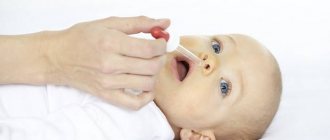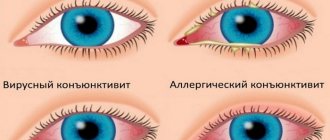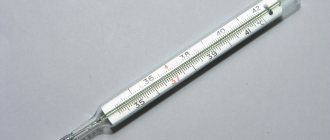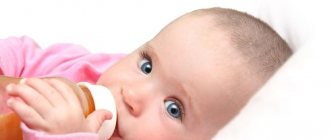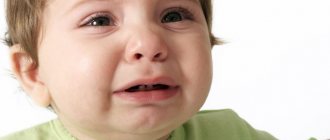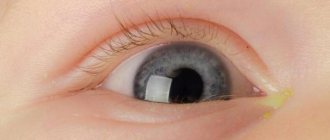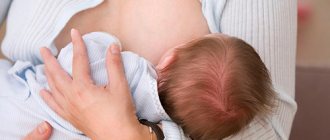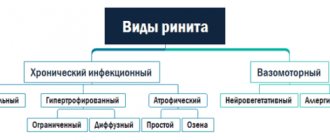Green snot in a child, what is the reason?
Normally, the discharge is liquid and light transparent.
The mucous membrane independently cleans itself of dust accumulations (microbes) and prevents drying out. The immune system is quite active in the fight against viruses (allergens). However, after a few days the mucus may thicken, creating optimal conditions for the infection to multiply.
The appearance of green flake-like discharge is a sign of the addition of bacterial microflora, when mucus discharge from the nasal cavity with dead bacterial cells (streptococci, staphylococci) begins to leave.
Typically, green snot in babies appears in the off-season (spring-autumn), during a time of reduced immunity (vitaminosis), when the body's resistance to the onslaught of bacteria sharply decreases.
Viral-bacterial (purulent) rhinitis may begin to develop, or:
- frontal sinusitis;
- nasopharyngitis;
- ethmoiditis;
- sinusitis;
- sinusitis.
More often, snot disappears during ARVI (mixed rhinitis), if bacteria enter the upper respiratory tract through airborne droplets. The child begins to complain of sinus congestion and the discharge of thick and painful green mucus.
This is a reason to contact a doctor; there are signs of the body fighting pathogenic bacteria, but the little body needs help.
Specific blood cells (neutrophils) begin to secrete special particles and resist infection, turning the discharge light green. But the more saturated it is, the greater the number of bacteria (Pseudomonas aeruginosa, pneumococci, staphylococci, streptococci, anaerobes) accumulates in the nose.
REFERENCE! Green nasal discharge does not occur with allergies, although reactions may well occur in combination with an infection.
Green snot as a symptom:
- If the shade of mucous discharge from the nose is light green , then it is considered a sign of recovery, although to exclude the development of an infectious and inflammatory course characteristic of sinusitis, sinusitis and otitis, it is recommended that the child be shown to a doctor and undergo an examination.
- A green nose in combination with a cough is a symptom of a cold. It is worth taking measures to speed up the removal of mucus before the process begins to spread to the respiratory tract.
- Green snot in tandem with an elevated temperature occurs with a viral etiology of the disease . An increase above 38 grams is a reason to consult a doctor.
- If the discharge leaves with droplets of blood , then it is probably a case of a broken capillary due to a severe runny nose or brain spasms. A visit to an ENT doctor and an examination are required.
- A lingering green runny nose with pus is a reason to test for pathogenic microflora.
Green snot in a child: treating a runny nose at any age
There is nothing worse than illness in children. But sometimes the manifestations of illness consist solely of the appearance of green snot. What does this mean and how can we help children? And in general, is green snot in a child good or bad? And what to do if suddenly the baby gets sick...
What to do if snot flows?
Where does green snot come from? The formation of snot is the body’s response to the penetration and active reproduction of pathogens on the mucous membranes of the nose.
Normally, the cells and glands of the mucosa produce a small amount of secretion, which performs a barrier and disinfectant function.
That is, it prevents the penetration of the smallest particles of dust and microorganisms into the respiratory tract, mechanically retaining them and killing them due to the presence of lysozyme and other enzymes.
In addition to them, nasal mucus contains various salts in small quantities, which explains why snot is salty.
But if viruses or bacteria manage to take root, an inflammatory process begins, the main manifestation of which is the active production of mucus.
This is a normal reaction of the immune system to infection, since an increase in secretion production helps to effectively flush out pathogens from the nasal cavity. But, speaking about how snot is formed, it is extremely important to consider the characteristics of their color in various cases.
Their color and character are one of the main signs that make it possible to distinguish viral, allergic and bacterial rhinitis. What are green snot talking about?
In the first two cases, transparent mucus of varying thickness flows from the nasal passages, while its coloration in a greenish color is an unambiguous sign of a bacterial infection.
The fact is that with the development of an inflammatory process provoked by bacteria, the body intensively produces leukocytes - blood cells that kill pathogenic microorganisms.
With viral or allergic rhinitis, leukocytes are produced in significantly smaller quantities or their level in the blood drops below normal.
?
Why is snot green: what is it connected with?
Through the walls of numerous blood vessels, they penetrate the nasal cavity, connect with the secretion produced and destroy bacteria. This is what causes mucus to turn yellow-green, which explains why snot is green only when bacterial rhinitis develops.
In such cases, the first thing to do is consult a doctor!
Source: nasmorkam.net After all, inflammation can spread to neighboring organs and cause, for example, otitis media and more dangerous diseases. It is also necessary to make adjustments to the child’s lifestyle, which means:
- walk more;
- ensure that at least in the nursery the air humidity level is within 50–60%;
- regularly ventilate living spaces and do wet cleaning;
- remove “dust collectors” from the nursery, that is, carpets, bookcases (you can cover the shelves with glass), etc.;
- Wash soft toys regularly.
However, the appearance of green discharge is not a reason to immediately take antibiotics orally or put them in the nose.
Of course, this may be required, but only in certain cases, which and why we will talk further.
?
How to treat green snot in a child?
Whether or not any medications are necessary if a child has snot should be decided only by a doctor, since in certain situations the use of even banal vasoconstrictor drops can be dangerous. The choice of treatment direction and its nature primarily depends on what caused the green discharge to appear. And this could be:
- rhinitis due to ARVI;
- ethmoiditis;
- sinusitis;
- frontitis.
As for infants, especially newborns, their runny nose is often physiological, that is, a way for the body to adapt to new living conditions. In such cases, any treatment can cause harm.
Green snot in a baby
The appearance of snot in a baby should definitely alert parents and force them to contact a pediatrician as soon as possible, regardless of their color and quantity.
You should not try to determine whether a runny nose is physiological or not on your own, because the younger the child, the faster complications develop, since the auditory, nasal passages and other similar anatomical structures are much wider and shorter than in adults, so the infection quickly spreads from the nose to other organs. However, if the release of clear mucus is observed from the first days of the baby’s life, most likely he has a physiological runny nose. It can last up to two months, and sometimes longer.
Moreover, the fact that snot flows into the throat can provoke coughing attacks. They are not considered a symptom of lower respiratory tract damage if they occur no more than 6 times a day. But when the discharge becomes greenish or yellowish or the little one coughs more than 6 times a day, this is a reason to immediately call a doctor.
After examining the baby, the pediatrician can usually determine the severity of the disease and select appropriate therapy for the situation.
For example, when the baby is one month old, snot is mainly treated by regularly rinsing the nose with saline or other similar saline products ( Aquamaris , Marimer , Aqualor and others), as well as suctioning out the mucus using an aspirator or a rubber bulb with a soft tip.
Very rarely, infants are prescribed vasoconstrictor drugs. They are only necessary when the little one is unable to eat and sleep peacefully due to nasal congestion. As a rule, in such situations, medications based on oxymetazoline are used:
- Nazivin;
- Nazol;
- Rinazoline;
- Sialor, etc.
If other symptoms are present, the following may be indicated:
1
Antiviral agents. Medicines of this kind increase immunity and thereby contribute to a speedy recovery. Infants are usually recommended to use candles, for example, Viferon , Laferobion , Viburkol .
2
Antibacterial drops. The drugs Albucid and Protargol are often prescribed to children of any age to combat green discharge, as they have a wide spectrum of action and destroy most known microbes.
3
Systemic antibiotics. These medications are necessary exclusively in the presence of a bacterial infection and belong to the category of heavy artillery.
For children of the first year of life, they are prescribed with extreme caution and only in combination with antihistamines, and only if they have bronchitis, pneumonia or another serious illness. As a rule, babies are treated with Cefekon, Cefix, Sumamed.
4
Antihistamines. They are used to eliminate the manifestations of allergic reactions, which are very often observed in babies of the first year of life. Liquid dosage forms of some drugs - syrups and drops - have been specially created for children. These are: Erius, Fenistil and others.
5
Antipyretic. Medicines such as Panadol and Nurofen can be used from 2 and 3 months, respectively, when the temperature rises above 38 ° C.
An excellent remedy is inhalation. They are carried out with herbal decoctions or simple mineral water. But it is better to use a nebulizer rather than a steam inhaler to eliminate the risk of burns. To prepare the solution, you can take decoctions:
- chamomile flowers;
- calendula flowers;
- eucalyptus leaves;
- sage leaves;
- their combinations.
It would be a good idea to add 1-2 drops of essential oils to the decoctions, for example:
- tea tree;
- rosemary;
- fir;
- mint.
Green snot: child 1 year
If a runny nose is the only manifestation of the disease, it is usually enough:
- regularly ventilate and clean the room;
- rinse your nose with saline solutions (after a year it is allowed to use sprays that more effectively wash away accumulated mucus, for example, Humer);
- often suck out snot from the nose;
- give the child plenty of water;
- do inhalations.
But if the snot does not go away within a week or the baby’s condition worsens, you need to call a doctor who will select the necessary medications from those listed above or prescribe the local antibiotic Isofra. If the disease persists, physiotherapy may be prescribed, in particular:
- UHF;
- Microwave therapy;
- magnetic therapy;
- electrophoresis, etc.
Green snot: child 2 years old
From the age of two, children can have their nose warmed up. But such a procedure can be carried out only after eliminating the possibility of developing any type of sinusitis.
Otherwise, local thermal exposure can only worsen the baby’s condition, as it will provoke increased production of pus, active proliferation of bacteria and the spread of the inflammatory process.
You can suspect the presence of sinusitis by the fact that yellow or green snot is observed in the morning, while the rest of the time it is released in a small volume or is completely absent.
In this case, the child may be lethargic, complain of headaches and suffer from fever. Otherwise, treatment is carried out in the same way as for younger children, and from this age it is allowed to give homeopathic remedies: Sinupret (solution or syrup) and Cinnabsin.
Green snot: child 3 years old
Usually, children from about 3 years old go to kindergartens and begin to get sick often and suffer from rhinitis. Therefore, the problem of how to stop this process becomes especially urgent at this age.
Increased attention should be paid to the environment surrounding the child and the state of his immunity. But there are no fundamental changes in the treatment plan for rhinitis.
However, if a runny nose in children is only one of the manifestations of a bacterial infection, from the age of 3 it is allowed to use such a popular local antibiotic as Bioparox.
How to treat green snot in a 4 year old child
Many modern drugs can be used from the age of 4. Therefore, the range of things that can help a child with snot is expanding significantly, especially with regard to vasoconstrictor drops. But the general treatment regimen remains the same.
?
Treatment of snot in a child using traditional methods
In general, you can cope with a runny nose using folk remedies. It is much cheaper and safer than using pharmaceutical company products.
But any folk remedies can be used only if there is no allergy to their components and the baby is in normal general condition. However, infants are not treated with their help.[ads-pc-1][ads-mob-1]
1
Soda solution. This remedy will help thin thick mucus and make it easier to come out. To prepare it, just dissolve a few grams of soda in boiled water or saline solution.
2
Herbal drops. Calendula flowers and yarrow herb take 1 tbsp. l. and pour 200 ml of boiling water. The composition is left to infuse, having previously wrapped the container in a towel. After it has completely cooled, 1-2 drops are dropped into the nose several times a day.
3
Honey. Honey is famous for its antibacterial properties, so it is advisable to use it to destroy pathogenic microorganisms in the nasal cavity. To get it to where snot accumulates, it is recommended to dilute it with a small amount of saline solution.
4
Juice of carrots, potatoes and beets. This product contains natural antibiotics that can destroy many pathogens. To prepare it, juices are squeezed out of vegetables and mixed in equal quantities. The prepared mixture is instilled into the nose, 1-2 drops a couple of times a day.
?
Prevention
It is unlikely that it will be possible to completely avoid the appearance of green snot, but it is possible to reduce the risk of this. For this purpose it is sufficient:
- provide the baby with a complete balanced diet;
- walk as much as possible in any weather;
- do exercises in the morning;
- do wet cleaning regularly;
- install a household humidifier.
All these measures will help strengthen children's immunity and increase the body's resistance to various viruses and bacteria. And if your little one does develop a runny nose, we recommend starting its treatment immediately, before the harmless clear discharge turns green, that is, before a bacterial infection occurs. Good health to you!
By the way: Dr. Komarovsky knows how to treat green snot in a child. This person is known as an excellent and competent professional in his field. His advice and recommendations have been proven in practice more than once and have helped many children and their parents.
?
What is bacterial rhinitis in a child?
Bacterial rhinitis is a disease caused by bacteria. Somewhat reminiscent of the allergic form, although it has its own special symptoms with manifestation already at the initial stage - sneezing, itching in the nose, congestion of the nasal passages, swelling, migraine, loss of appetite, decreased sense of smell (distortion of odors), discharge of first yellow-green nozzles, then bright - green and thick.
In the first months of life (during the period of adaptation to the environment), discharge like a runny nose can appear due to physiological factors in newborns. But in any case, you should see a doctor to understand what is causing the discharge and whether treatment is necessary.
Symptoms
Green thick (purulent) discharge is not the only symptom of the disease if the nasopharynx is affected by infection.
Typically, signs appear in increasing order:
- apathy;
- muscle aches;
- decreased appetite;
- headache;
- chills, fever 37.5-39 degrees;
- intoxication;
- cough;
- body aches;
- difficulty breathing.
REFERENCE! Cough is a dangerous symptom of infection of the nasopharynx and upper respiratory tract. If severe bouts of coughing with the discharge of green snot bother the child at night, then it is worth taking therapeutic measures to avoid the development of serious complications.
If the snot is yellow or even green
Yellow snot in a baby indicates that the infection has subsided and its cells are gradually dying off. Therefore, although the color of such a runny nose is alarming, it is actually for the better. In the case of green color, treatment of snot in an infant depends on the consistency. How to treat liquid snot - the same as white snot. But what if they are thick? In this case, the principle of treating snot in infants consists only of regular moisturizing. And, of course, sucking.
It is worth noting that a baby's green snot can be, well, very thick. Parents naturally want to make their child feel better, and they are ready to moisturize their nose at least every hour. But this should not be done, because the body must also use its protective functions. Otherwise, he will “relax”, and the child will have to moisturize the nasal mucosa with pharmaceuticals for a long time.
As you can see, snot in a baby is an eloquent indicator of health. If they appear, most likely the body is fighting something. However, we should not forget that snot and cough in infants are sometimes a consequence of decreased immunity due to teething. To avoid using medications that may be of no use, consult a doctor at the first sign of discomfort to determine the cause of the problem.
Is there any danger?
Green discharge is a sign of inflammation in the nasopharyngeal space. If you do not stop the process at the initial stage, it will go further, and the infection will go up (to the brain, ears) or down - to the lungs, bronchi.
The child’s body is not adapted to the onslaught of viruses (bacteria), which begin to multiply rapidly. The inflammatory process in the nasopharyngeal area can develop rapidly. If you ignore timely treatment measures, then serious consequences are inevitable: inflammation of the membranes of the brain, the development of sinusitis, bronchitis, meningitis.
The danger of green snot
Ignoring by parents the appearance of green snot in a baby can cause the development of serious illnesses with serious consequences. All responsibility falls on the parents and their attentiveness to the health of their child.
Decreased immunity
If green snot is provoked by the development of an inflammatory process, the body’s ability to fight bacteria and infection is noticeably reduced. Complications may occur and treatment will take a long time.
Infection of other organs
Green snot should not alarm parents only if the child has been examined by a doctor and found no danger. But if prolonged rhinitis or rhinosinusitis has been diagnosed, then the likelihood of the infection spreading to other organs increases. In advanced cases, brain diseases are possible.
Development of ethmoiditis
If you start green snot and ignore treatment, the resulting pus accumulates in the bridge of the nose near the eye and can end up in the skull. Ethmoiditis is characterized by high fever, pain in the bridge of the nose and cough.
Development of frontal sinusitis
This disease is fraught with the development of bronchitis, pneumonia and sore throat. Also, one of the complications of frontal sinusitis is blood poisoning. Treatment should be carried out by an otolaryngologist.
The body of an infant is still poorly formed, it is vulnerable and weak. Any ailment of the baby should not be ignored. At the initial stage, it is easier to overcome the disease than at an advanced stage. The likelihood of developing complications or becoming chronic at the onset of the disease is extremely low. The main thing is to see a doctor in time and not to engage in amateur activities, the baby has only one health, he needs to be taken care of.
Treatment of green snot
Treatment is complex.
Based on medications:
- antibiotics to eliminate symptomatic manifestations of the disease;
- local drugs;
- antipyretics;
- traditional recipes (with the permission of the attending physician).
The basis of therapy for infants under 1 year of age is nasal rinsing and the use of nasal drops. If you are concerned about cough and temperature, then antitussive (antipyretic) drugs, antibiotics if complications are suspected.
During the treatment period, it is important for the baby:
- provide psychological (physical) peace;
- review nutrition, normalize a gentle diet and regimen;
- give warm drinks (fruit drinks, compotes, teas) more often;
- Regularly ventilate the room and carry out wet cleaning.
Treatment is prescribed by an otolaryngologist or pediatrician. The scheme is selected taking into account the identified pathogen based on the diagnostic results obtained.
Medicines
Thick snot occurs when bacterial microflora is attached, so therapy is usually carried out with agents with an antibacterial, antibiotic effect.
Permitted medications for a child to sanitize the nasal cavity and remove accumulated mucus:
- Protargol with silver ions in its composition;
- Pinosol;
- Vibrocil;
- Rinofluimucil (spray);
- Combined drugs to relieve inflammation and provide a vasoconstrictor effect - Polydex;
- Penicillin antibiotics – Augmentin;
- Cephalosparins – Suprax;
- Homeopathic medicines – Gelomirton;
- Antihistamines, if you are worried about a runny nose, swelling of the nasal mucosa, discharge of thick snot - Suprastin, Claritin;
- Vasoconstrictors, if the child has difficulty breathing with a stuffy nose - Sanorin, Nazivin;
- Plasters, ointments with a warming effect - Doctor Mom, Sopelka;
- “Star” balm drops with a distracting antimicrobial effect.
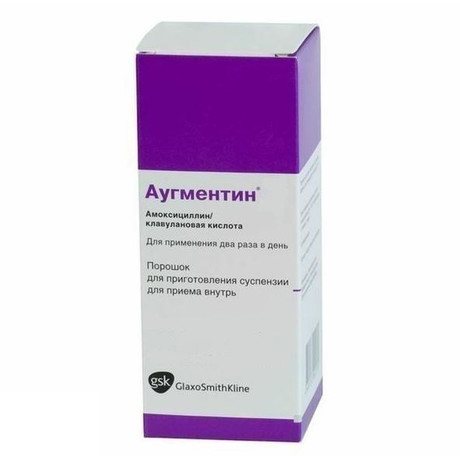
Augmentin
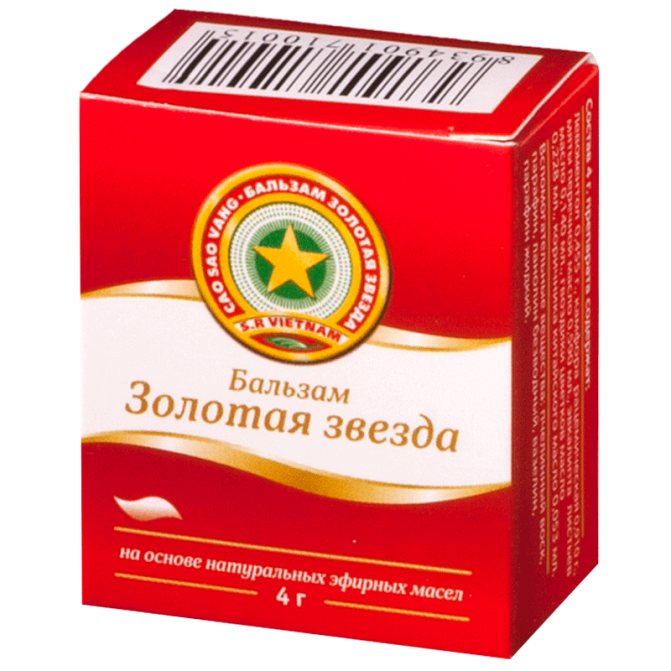
Star
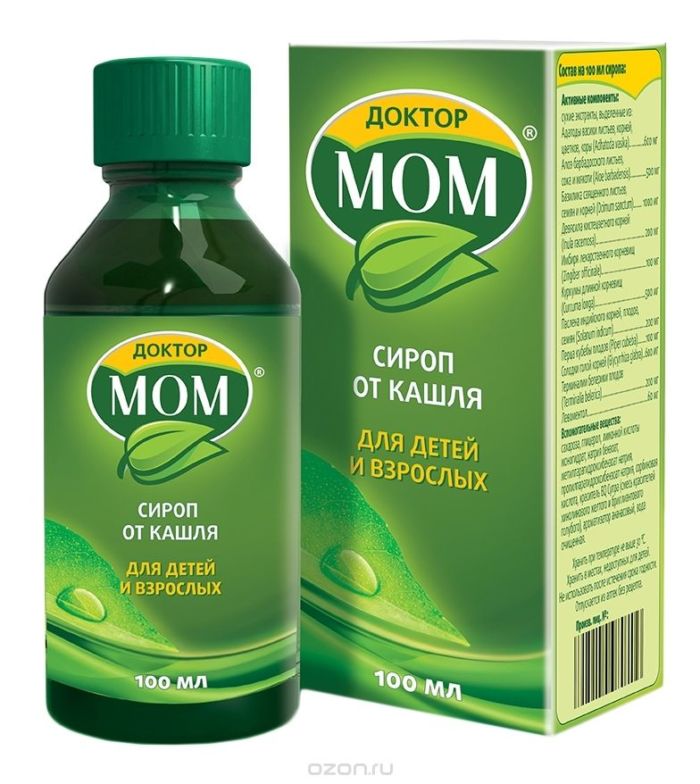
Doctor Mom
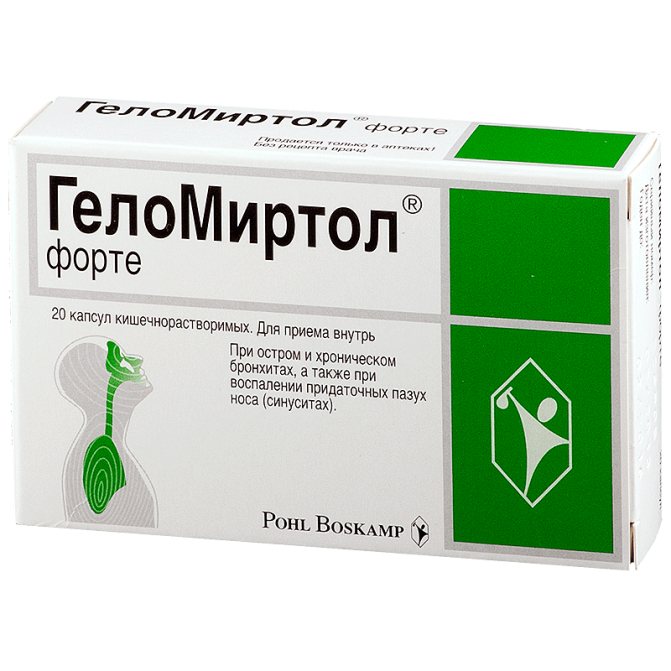
Gelomirtol
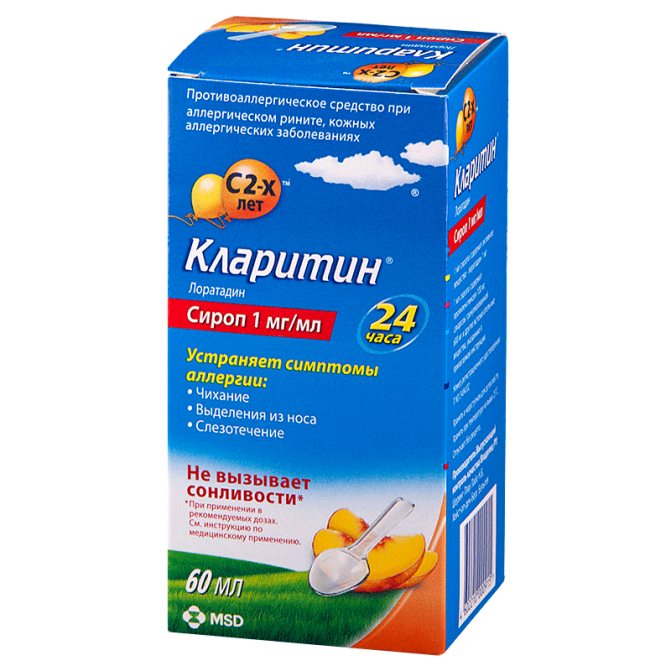
Claritin
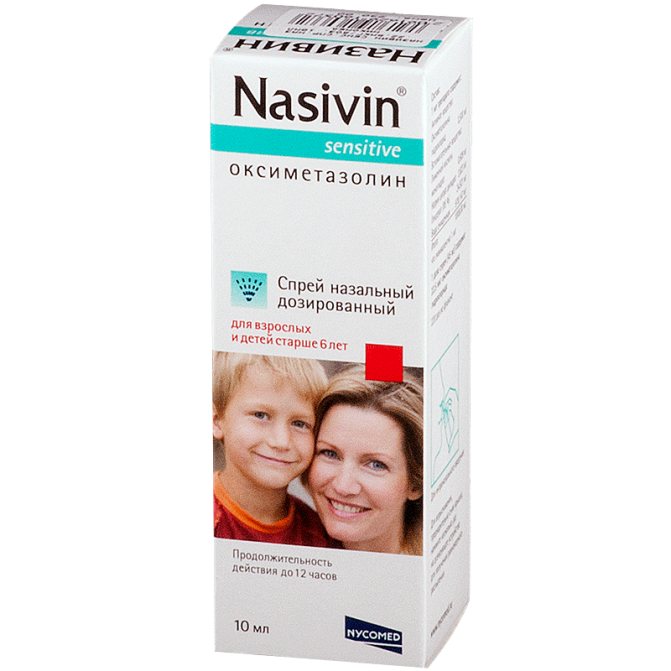
Nazivin
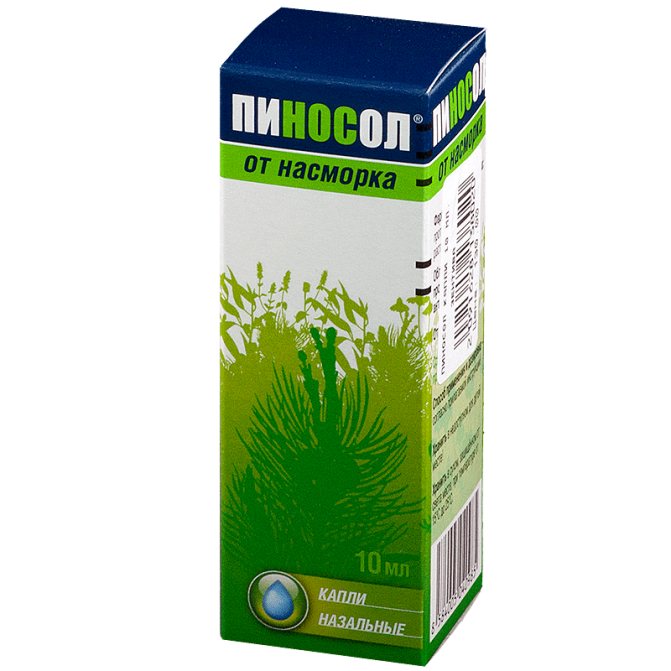
Pinosol
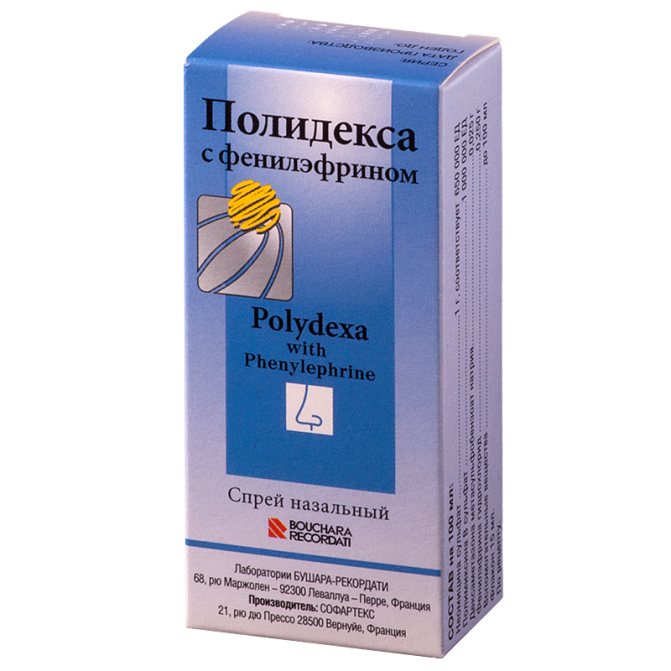
Polydexa
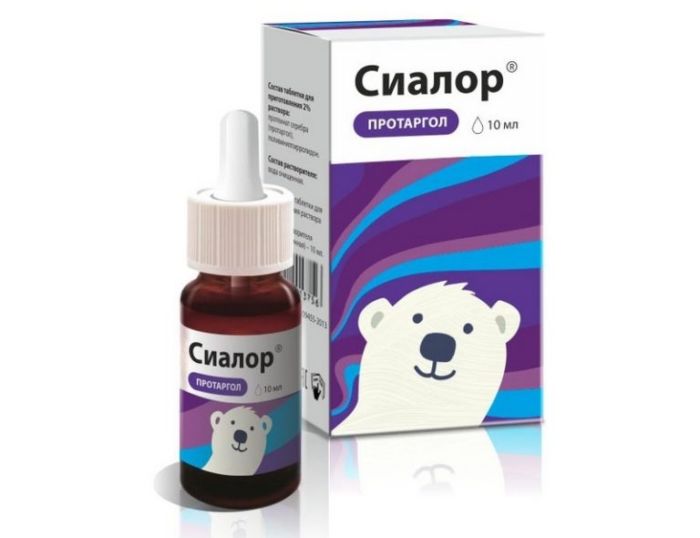
Protargol
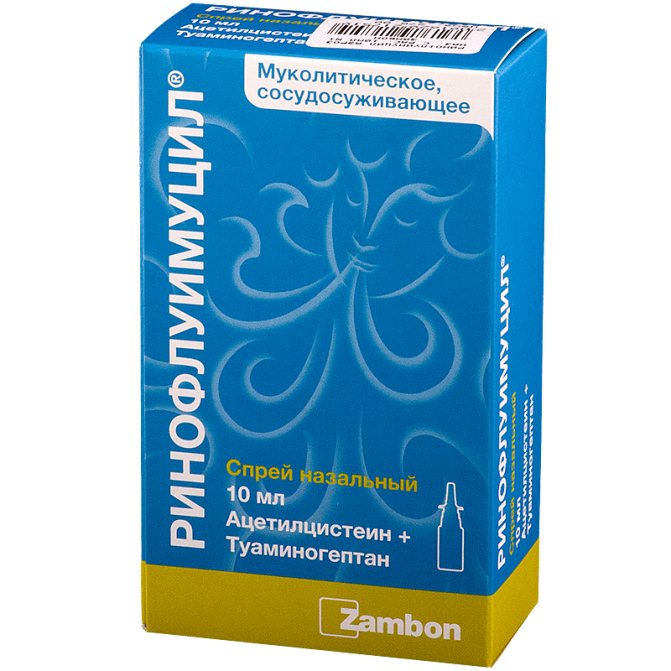
Rinofluimucil
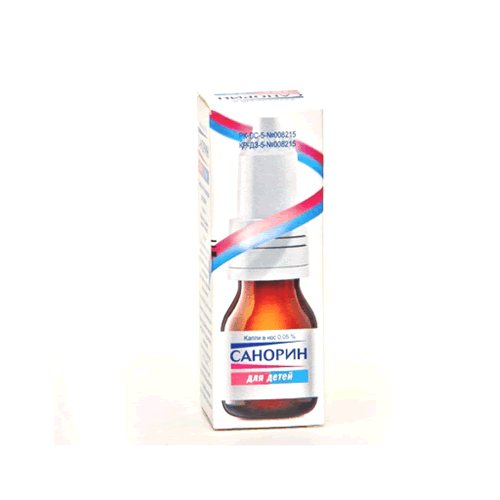
Sanorin
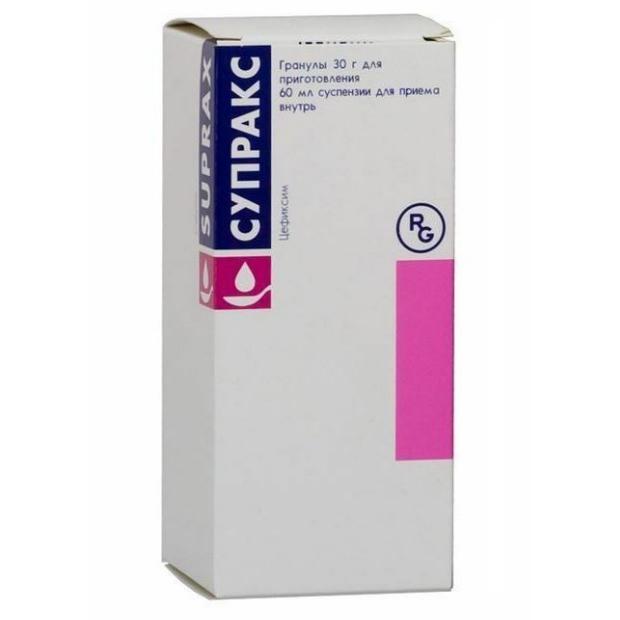
Suprax
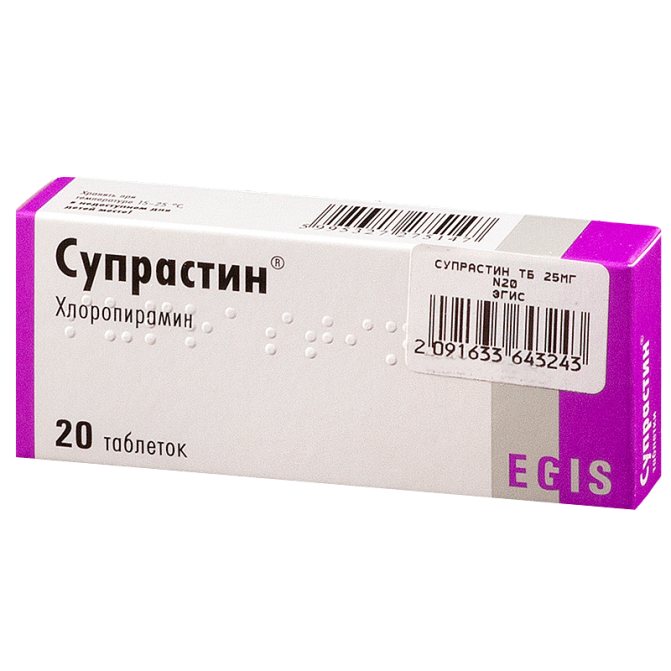
Suprastin
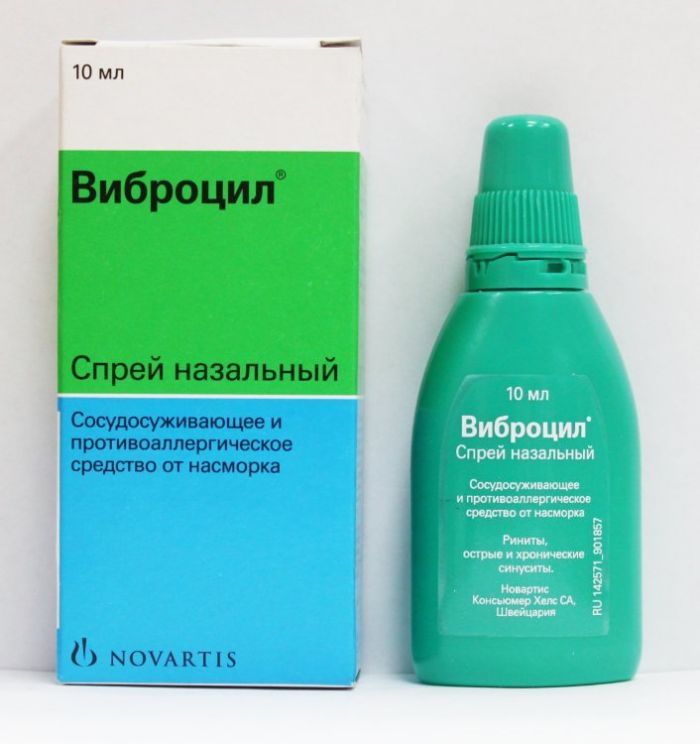
The basis of therapy for infants is nasal rinsing and nasal drops. If you are concerned about cough and temperature, then antitussive (antipyretic) drugs, antibiotics if complications are suspected.
If antibacterial therapy is prescribed, it is important to complete the course completely and not stop treatment after 2-3 days when the baby’s well-being improves. Only completing the full course of therapy will not lead to antibiotic resistance. It is important to follow the dose, taking into account the weight (age) of the child. Wrong actions can cause poisoning and intoxication of the body.
Drops
A special role is given to instillation and rinsing of the nasal cavity. Nasal sprays and drops with an antibacterial (vasoconstrictor) effect are indicated for use in children under 3 years of age as local therapy.
The most common medications prescribed to children for a runny nose with green discharge:
- compositions based on sea water - Dolphin;
- antibacterial compounds - Polydexa, Isofra, Bioparox (with antibiotics) if there is a risk of purulent complications;
- Pinosol, Miramistin with an astringent, anti-inflammatory effect;
- infusions (drops) based on sea salt - Aqualor, Aquamaris (to moisturize the mucous membrane), approved for use by infants from birth;
- preparations for thinning mucus in the nose with vegetable oils - Sinuforte.
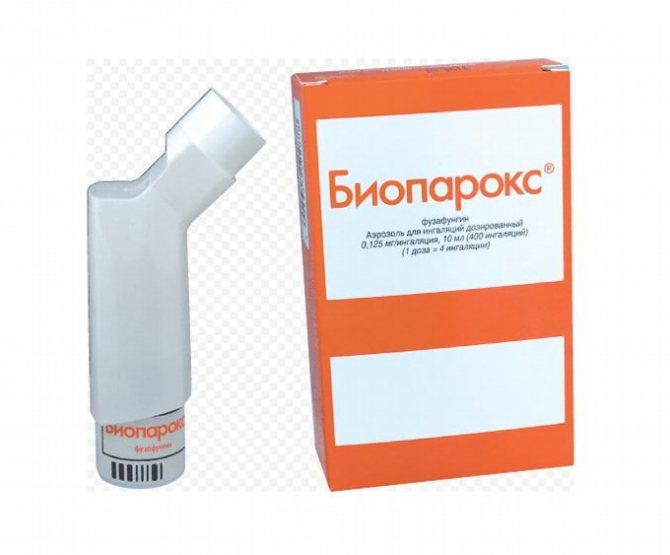
Bioparox
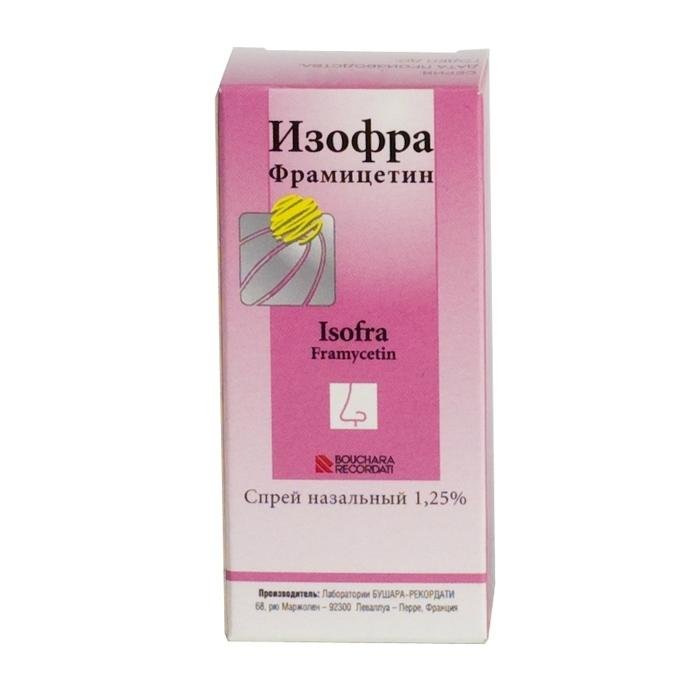
Isofra
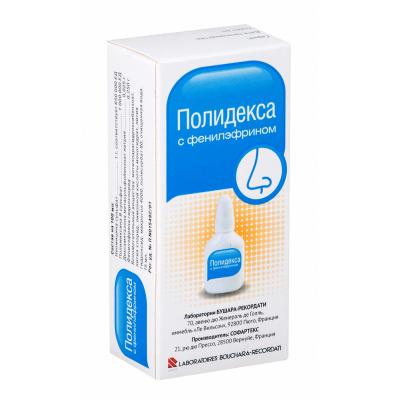
Polydexa
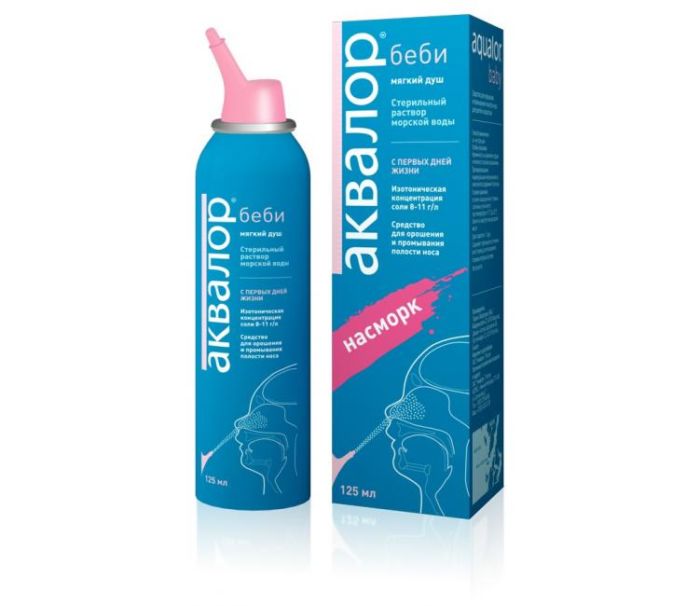
Aqualor
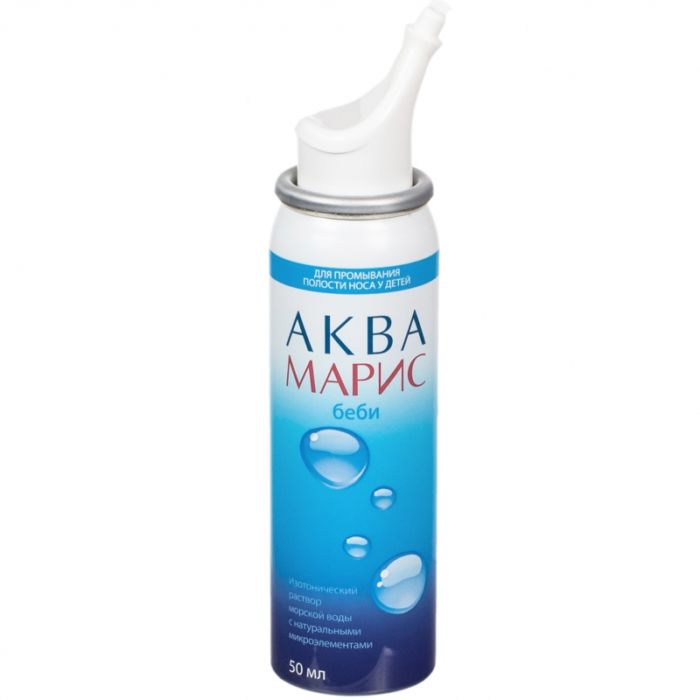
Aqua Maris
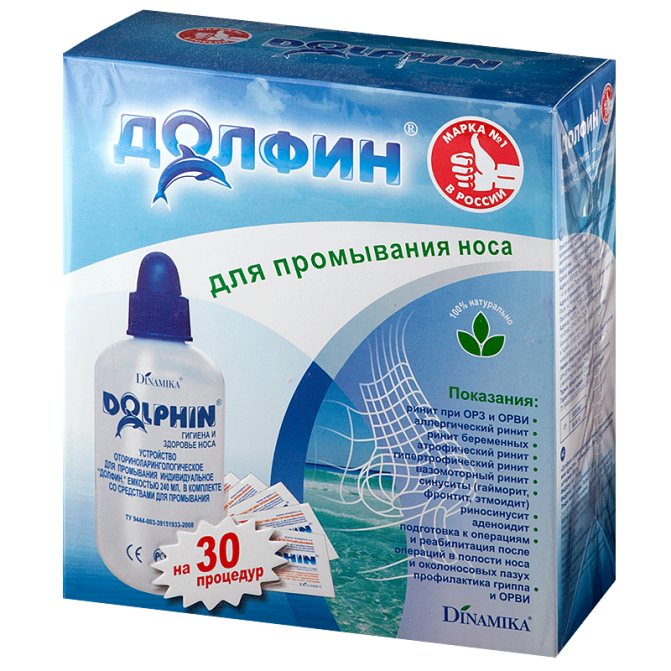
Dolphin
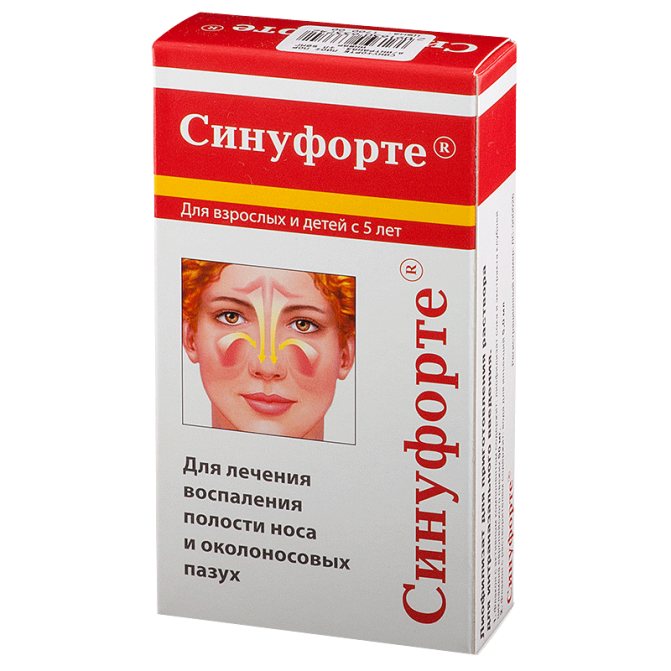
Sinuforte Pinosol
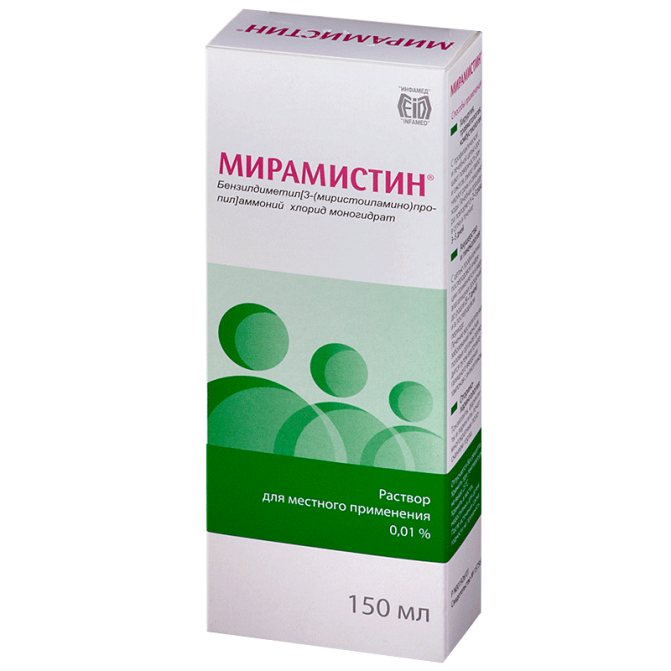
Properly selected drops will help eliminate the signs of purulent rhinitis in 6-7 days, but it is imperative for parents to follow all the doctor’s recommendations and instructions.
Vasoconstrictor drops
Drugs with a vasoconstrictor effect are prescribed to children exclusively by the attending physician, since overdoses can lead to serious complications.
Popular, often prescribed drugs for copious discharge of green mucus from the nose and the removal of swelling and inflammation, but only in short courses:
- Nazivin;
- Otrivin;
- Nazol Baby;
- Rhinostop;
- Galazolin.
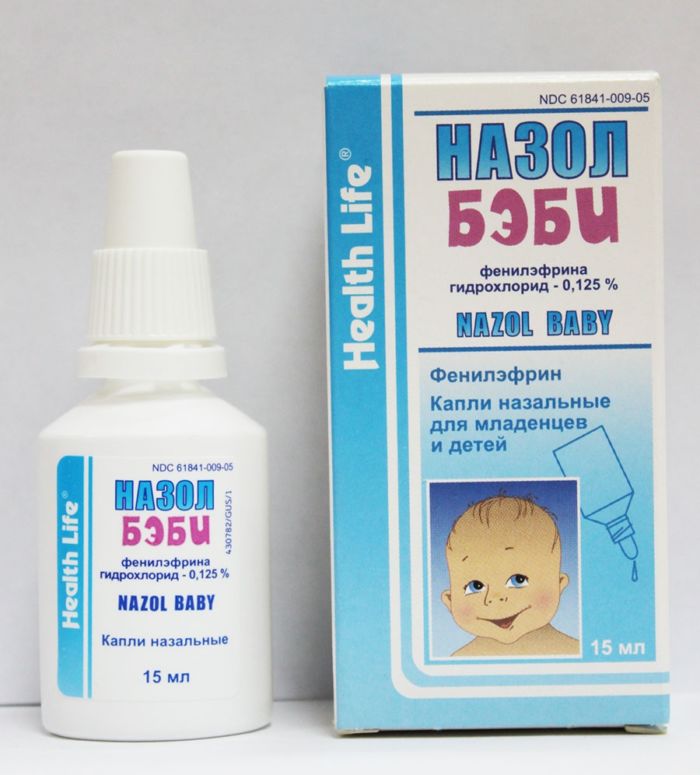
Nazol
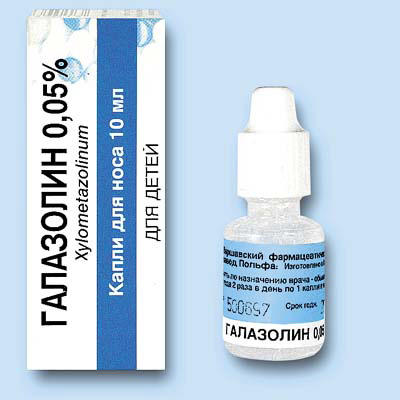
Galazolin
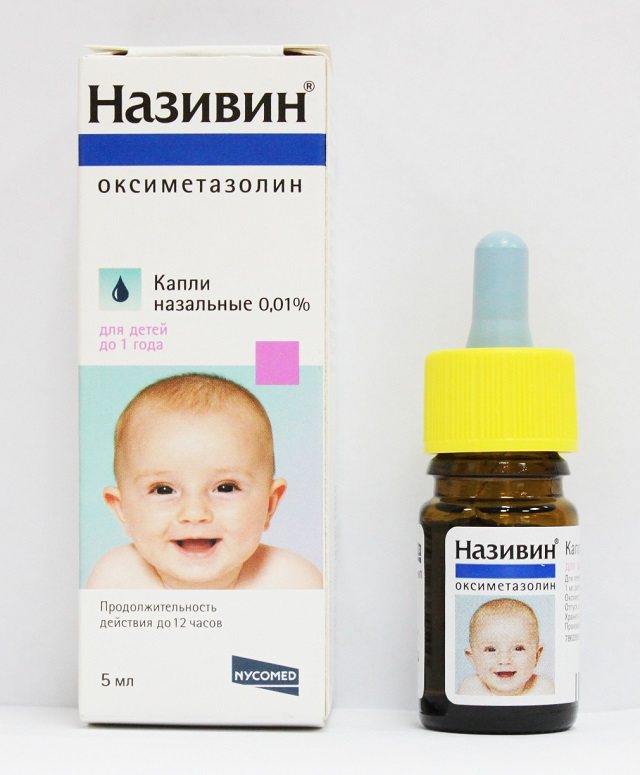
Nazivin
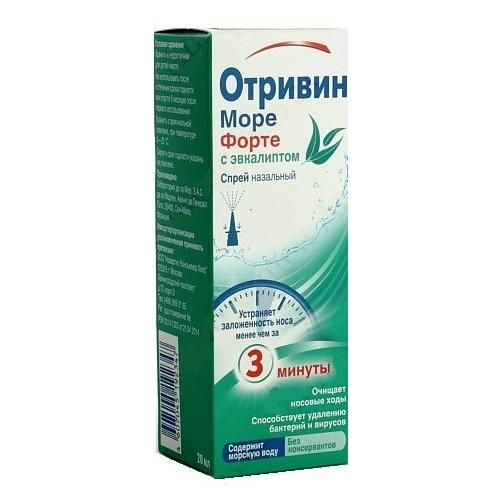
Otrivin sea forte
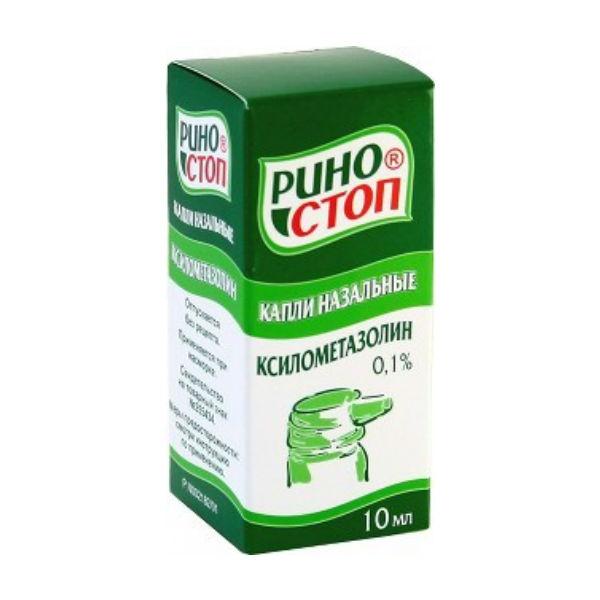
When choosing medications, it is important to take into account the age of the child and the concentration of the active substance in the medication. For example, 0.1% of active particles is acceptable for children over 6 years of age, 0.05% for children under 2 years of age.
REFERENCE! It is not advisable to use drops for children containing active ingredients (Ephedrine, Naphazoline, Thiotriazoline). These are drugs with a short duration of action, so to achieve a greater effect, you need to use them in double doses, increasing the frequency per day. The child may end up with serious poisoning.
If you choose the right drops, then even with purulent rhinitis they will help to quickly relieve unpleasant symptoms and save the child from the disease in just a few days.
Green snot in an infant
If the baby develops snot (colorless), parents should understand that it may be caused by a virus, so you need to show the newborn to the doctor as soon as possible. A runny nose in newborn babies is different from an adult runny nose, because an infant's nasal passages are much narrower, and possible swelling of the nasal mucosa in babies can occur much faster. (See article: Runny nose in an infant)
If the nose is clogged, it is difficult for the baby to breathe, the snot is thick and green - these are signs that a bacterial infection has been added to the virus . Of course, the first advice that parents should be given in such a situation is to call the clinic and rush to show the child to the doctor. While the doctor is on the way, it’s worth thinking about what can be done to help the newborn and make sure that the snot bothers him as little as possible.
Necessary and important:
- Humidify and prevent the air from drying out in the room where the child is. Humid air guarantees that the mucus in the nose dries out less and makes it easier for the baby to breathe.
- Clean the crumb's nose of mucus. A runny nose in babies is very painful, since with a clogged nose it is impossible to suck milk, so mucus from the nose must be removed. In a house where there is a baby, there must be an aspirator, best of all, one that is suitable for age (one that is intended for infants) and with replaceable nozzles. (See article: How to clean a newborn baby’s nose with aquamaris, pear, aspirator)
- It is very useful to moisten the baby’s nose with saline solution (a solution of sea or table salt), especially if the snot has thickened and is difficult to separate. You can buy it at the pharmacy, or you can get it yourself by adding a little salt to hot boiled water. It is impossible to achieve an overdose from such a solution; to make it more convenient to put drops in the baby’s nose, use a pipette or a pear-shaped aspirator (you need to fill the aspirator full of saline solution for better pressure, and add literally a couple of drops into one nostril, then into the other). (See article: How to properly place drops in a newborn’s nose)
It is very important when a baby develops a runny nose or, even worse, green snot, to understand what parents do not need to do.
Unnecessary and even dangerous:
- Try to prescribe treatment for the baby yourself.
- Try to drip breast milk into your son or daughter’s nose, as is sometimes advised. Advisers are guided by approximately the following: breast milk is full of various beneficial substances that will definitely deal with a runny nose. It is worth remembering that any milk is the best environment for bacteria, which will definitely thank you for such a celebration of life.
- Heat or warm the room at the first sign of a runny nose. Dry and hot air leads to this: the nasal mucosa dries out even more, the snot dries up and becomes more difficult to cope with.
- Try to give your baby medications that are prescribed not for acute respiratory infections, but for allergies. This is dangerous, as it can cause swelling of the baby’s mucous membrane.
- Give your child medications that are inappropriate for his age or give him antibiotics.
Medical attention and good care will quickly cure your baby's runny nose.
Nasal rinsing
It is important for children to rinse their nose if there is thick green mucous discharge. This is one of the therapeutic techniques with the possibility of using hypertonic (isotonic) solutions (Miramistin saline solution) for children from 3-4 years old, containing sodium chloride 2.4% for children from 3 years old in order to dilute (remove) thick snot.
For infants from 2-3 weeks of life, only formulations based on sea salt are used:
- Physiometer;
- Aquamaris;
- Aqualor Baby.
Aqualor Aqua Maris
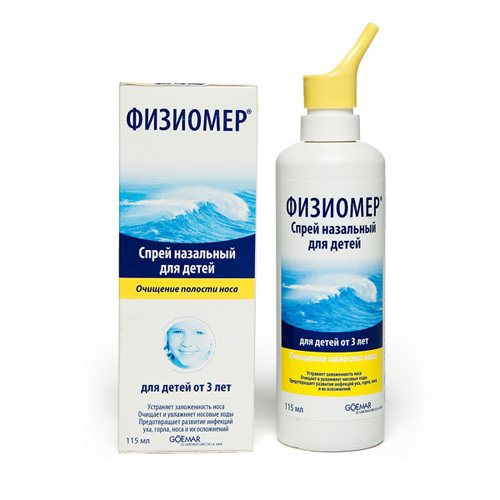
To properly rinse a child’s nose, you need to:
- lay on your side, on your back;
- pour liquid into the upper nostril with a syringe (5 cubes);
- carry out a similar procedure with the other nostril;
- clean excess mucus from the nasal passages with a sterile cotton swab in infants.
If children can already blow their nose on their own, then ask them to do it. In addition, it is important to remove wax from the ears with hydrogen peroxide in a timely manner. In case of a severe runny nose, rinsing should be done up to 3 times a day, instillation - 2-4 drops of solution with incubation for up to 2 minutes - 2-3 times (1 time before bedtime). You can prepare a saline solution yourself, for which sea (table) salt and soda (1/2 tsp each) are poured with boiled water (1 l), mix well.
If the snot is white and thick
Viral bacteria, being in the larynx and nasal sinuses, among other things, multiply. Their waste products are excreted along with the runny nose, giving the discharge a white color and viscosity. This is why snot in the nasopharynx can take on a white tint. This indicates that the infection in the body is in full swing.
The thicker the discharge, the more difficult it is for the baby to get rid of snot - he still does not know how to blow his nose and simply does not understand what to do. They may not leak at all - often parents are faced with a situation where the baby seems to “grunt” through its nose, but there is no snot. But it immediately makes it difficult for the baby to breathe and the mucus forms a plug that the infant himself cannot break through.
It is necessary to first remove the snot, and then prevent the production of new ones. How to properly treat thick white snot in a baby:
- treat the baby’s nostrils with a moisturizer, for example, preparations with sea water (“No-Sol”, “Aquamaris”, “Humer”);
- after a few minutes, remove the softened formations - either pull them out if they are on the edge, or suck them out if they are in the depths;
- use vasoconstrictor drugs as prescribed by a doctor.
Any treatment must be agreed with a pediatrician or children's ENT specialist - a specialist will tell you how to cure snot most quickly.
As for how to remove snot, doctors have different opinions. Someone sticks to the old school and suggests making cotton wool. Some people recommend using more modern nozzle ejectors. Any of these methods of treating snot in a baby will cause a protest: it is uncomfortable for him when his nose is stuffy, but it is just as unpleasant for him when someone tries to do something with his nose. Therefore, in order to remove thick snot from a baby, you can choose any option that suits the parents. Unless you should ask grandmothers how to suck out the snot of a baby - they probably recommend an outdated and unhygienic method.
Many people stop at the diagram we have given: thick snot from the outside is removed with a cotton swab, and those that are deeper are removed with a nozzle suction. The instructions for this device clearly show how to suck out a baby's snot - it doesn't take long and is not difficult, but it will require a little experience.
Physiotherapy
Green snot in children requires an integrated approach to treatment. It is important to speed up the removal of serous accumulations from the nasal cavity.
Painless hardware methods of physiotherapy with 6-8 procedures help well when the acute process of inflammation begins to subside:
- UHF;
- electrophoresis;
- ion therapy
- helium-neon laser
- quartzing (tube).
Inhalations using a nebulizer quickly eliminate cough and runny nose. When inflammation subsides (no fever), then children from 2-3 years of age are recommended to warm up. Although this option is contraindicated if purulent flow is observed in the sinuses, sinusitis is diagnosed when surgical techniques are already required.
What not to do when treating green snot in a baby
In no case should parents independently, without relying on the doctor’s recommendations, give their newborn baby medications. It is especially dangerous to use allergy medications to treat flu or colds.
If antiallergic drops get into the nose, irritation and swelling of the mucous membranes may occur. It is strictly prohibited to use antibiotics and potent drugs intended only for adults to remove thick snot from infants. Do not overheat the room in which a sick baby is located. Due to dry air, the mucus in the nose becomes crusty, which is very difficult to get rid of.
Contrary to the opinion of grandmothers, it is not allowed to drip breast milk into the nose to cure green snot in a baby. Although it is rich in useful substances, it does not cure green snot at all; on the contrary, it is an excellent breeding ground for pathogens in the nasal mucosa.
Treatment of children under one year of age
Infants under one year of age need close attention from a pediatrician or otolaryngologist.
Medicines are selected based on existing symptoms and diagnostic results. Treatment should not aggravate the situation or cause additional harm.
Mothers should first of all take care of the humidification of the room where the sick child is staying.
If the air is dry, it is recommended to install an air humidifier or place wet towels on the radiators to evaporate moisture.
More often, newborns develop a physiological runny nose in the first 2-3 months of life, when a high temperature does not bother them. Treatment with medications is not carried out. Gradually the snot should go away.
It is enough just to create normal home conditions. If the temperature rises, then we are talking about the spread of a bacterial infection in the nose. You need to see a doctor.
The mucous membrane should not be allowed to dry out.
If the child is not yet 1 year old, then it is reasonable to treat exclusively with natural remedies:
- Saline solution based on sea water (drops) for children 4-5 months old;
- Sea buckthorn oil;
- Anti-inflammatory, antiseptic agents - Otrivin Baby, For the nose, Nazivin (for children from 5 months);
- Grippferon drops;
If you are bothered by green snot at 7-8 months, then it is better to limit yourself to folk remedies.
If there is no allergy, for example:
- balm “Star” (lubricate the wings of the nose);
- aloe (beet) juice to suppress the inflammatory process, thin out thickened mucus, and ease breathing.
Babies, upon reaching 9-10 months, can be treated with drops in combination with acupressure over the eyebrows, bridge of the nose, and eyes. From 1 year of age, it is permissible to use steam inhalers filled with herbal (medicinal) decoctions, saline solution, and antiseptics (Furacilin, Chlorophyllipt) in order to wash out accumulated secretions.
Treating snot in infants is problematic because they do not know how to blow their nose. But the mother’s role is to help free breathing, so it is worth sucking out snot more often with a medical bulb or aspirator. To make you feel better, you can use drops: Vibrocil, Nazivin Baby, sodium sulfacyl.
If the disease progresses, the temperature is bothersome and thick (flaky-like) discharge is discharged, then antibiotic therapy should be carried out.
REFERENCE! The drops should be warm, so when removed from the refrigerator, you should rub them in your hands before instilling them. It is not recommended to instill breast milk into the nasal passages, since the effectiveness of this method has not been proven. Lactose in breast milk can cause increased bacterial growth and worsen the baby’s well-being.
The drugs Grippferon and Interferon will help minimize unpleasant symptoms and help strengthen the child’s body’s defenses.
What does liquid transparent snot say?
An hour ago everything was fine, but now the baby’s snot is flowing like a river. And they literally flow—non-stop, uncontrollably. When clear snot flows, it may indicate that:
- the child is frozen - happens to children after a walk in the cold season;
- the baby is in a too dry microclimate - again, this is especially important in the cold season, if the heat source is actively working at home, but additional humidification of the room is not provided;
- an infection begins to develop - and the body thus tries to remove it.
It can also be a physiological runny nose, which is typical for children at 8-10 weeks of life. It does not require treatment and goes away within 5-7 days.
Transparent sniffles in a baby can irritate the skin between the nose and mouth, which, in turn, causes discomfort to the baby. How to treat them? In this case, vasoconstrictor drugs will help, for example, children's "Nazivin" (but specifically "Nazivin 0.01%" - it is for children under one year old), complex drops, "Sanorin", "Naphthyzin". They are used strictly according to the recipe specified in the instructions, otherwise they can cause harm. Vasoconstrictors will slow down the production of nozzles, which will allow the baby to breathe comfortably and easily.
In addition to medications, clear snot in a baby can be treated with steam inhalations, or better yet, with baths with the addition of extracts of pine needles, eucalyptus, linden or chamomile. This supplement will help not only overcome a runny nose, but also strengthen the immune system. After all, even if the baby does not yet have a fever, a fever may appear soon - and you need to try to prevent such complications.
Folk remedies
To get rid of green snot - medicinal herbs (sage, yarrow, chamomile, calendula, eucalyptus) with an anti-inflammatory, antiseptic effect.
Effective recipes in the absence of allergies:
- Aloe (age 3-4 years, 2 leaves) squeeze out the juice, drop 2-3 drops from a pipette into the nasal passages. Make sure that the pulp does not get into your nose.
- Collection of herbs (St. John's wort, linden, chamomile). 2 tbsp. pour boiling water (1 cup), leave, strain, give children 0.5 cup 2 times a day.
- Fresh juice of potatoes, beets, and carrots, containing phytoncides, suppresses the runny nose well as a natural antibiotic. The main thing is to dilute with water (1x1) and use it fresh.
- Steam inhalations are excellent for eliminating a runny nose. It is enough to boil a couple of potatoes in their skins or prepare a hot herbal infusion (eucalyptus sage, oregano, chamomile), add essential oils of mint, fir, eucalyptus, lavender, rosemary.
Folk remedies for combating green snot
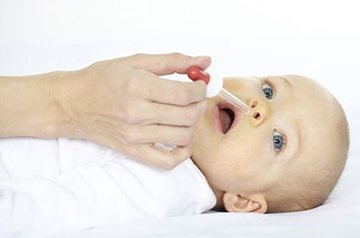
Our ancestors found ways to treat many diseases, green snot in newborns is no exception.
These methods are safe and have a good therapeutic effect.
Folk remedies are based exclusively on natural ingredients that do not cause intoxication and allergies.
Some of them do not require internal reception at all.
- Warming up the sinuses. You need to boil an egg or potato, then, without letting it cool, place it on your cheek next to your nostrils. To avoid burning the baby, wrap the hot product in a thick cloth and carefully monitor the reaction.
- Drink plenty of fluids. You can't get rid of it with just water. You need to drink breast milk, tea, milk with honey. Before use, consult your doctor - allergic reactions are possible.
- Nasal rinsing. We talked above about washing with medications, but traditional methods of treatment involve the use of chamomile and calendula. They not only free the sinuses from mucus, but also have an anti-inflammatory effect.
Sea buckthorn oil has proven itself well. They need to lubricate the inside of the nostrils three times a day. The product makes breathing easier and relieves inflammation. Recommended for use in conjunction with sinus warming.
Inhalations with essential oils (mint, pine, cypress) cannot be used. These products are suitable for children over one and a half years of age.
Possible complications
It is important to start treatment immediately, otherwise the risk of complications will be increased and the pathology will take a chronic course. The recovery process will become protracted.
Green snot is the addition of a bacterial infection when mucus with dead cells (streptococci, staphylococci) begins to leave. Usually, nasal discharge bothers children in the off-season (spring-autumn), during a period of reduced immunity (vitaminosis).
The danger is represented by thick secretions that come out in viscous flakes, flowing down the back wall of the nasopharynx, when the infection is likely to spread to the respiratory system. In children, the Eustachian tube is excessively wide and short (without bending). Snot can easily penetrate into the middle ear, causing the development of otitis media. Less commonly, the common cold leads to inflammation of the cerebral cortex or meningitis.
It's not scary if snot flies out of your nose with streaks of blood. Often a child strains the nasal sinuses in an attempt to clear the passages, while the mucous membrane is weak and sometimes severely damaged by inflammation. A small vessel has probably ruptured, when you can take a break for 1-1.5 days and continue treatment.
Komarovsky's advice for a prolonged runny nose
A prolonged runny nose is a common symptom when the snot comes out first transparent gray, then yellow, green with particles of pus.
The pediatrician recommends taking a wait-and-see approach without resorting to heavy medications. It's best to wait until the cold becomes obvious.
Of course, green snot is a bacterial infection of the mucous membrane. It is reasonable to treat with antibiotics.
But many medications are harmful to children. They have a detrimental effect on the stomach and intestinal microflora, often causing side effects.
It is important to approach therapy competently and trigger inflammation. The discharge of green stuff from the nasal passages in bacterial rhinitis can be successfully treated without antibiotics. The main thing is to make sure that the snot does not dry out in the nose and does not become crusty.
According to Komarovsky, ordinary humidification of the room is enough for children’s breathing to gradually begin to stabilize. The role of changing a child’s lifestyle when they have a runny nose is enormous. But vasoconstrictor drops can be used in exceptional cases, with a prolonged runny nose.
If it is not possible to install a humidifier in the children's room, then you can resort to an old but proven method - place an aquarium in the room and lay wet sheets on the radiators. Usually during the heating season the air in the room is dry.
Optimal air humidity -50-70% Temperature - 18-19 degrees. A hot climate is an ideal environment for activating infection.
If there is no temperature, then it is recommended to walk more outside. The mucous membrane itself will moisturize faster, and the body will show greater resistance to bacteria. It is important for parents to prevent the appearance of green snot in children and treat clear discharge.
Important tips from your pediatrician:
- treat rhinitis as soon as clear discharge begins to ooze from the nose;
- eliminate a runny nose in a week by instilling chamomile infusion, saline solution, a mixture of salt and warm water
- teach children to blow their nose from a young age;
- if a cough bothers you, then Ambroxol, ACC to thin the mucus in the bronchi and moisten the mucus in the nose can help;
- Thuja (peach) oil helps well if adenoiditis is observed accompanied by inflammation in the nasal cavity (1-2 drops per day);
- if the discharge is thick and purulent , then you need to instill fresh Kalanchoe juice (which causes sneezing) and the snot will fly out on its own, freeing the nasal passages;
- if you manage to fight a cold without vasoconstrictor drops , then you should not use them, which can only cause nausea, vomiting, dizziness, and an overdose can bring the baby to intensive care;
- do not instill formulations with antibiotics , only with natural ingredients that do not cause allergies or addiction;
- do not forget about drinking plenty of fluids to speed up the removal of accumulated exudate in the nose;
- take a walk outside if there is no high temperature , because this way the mucous membrane will moisturize faster naturally;
- It’s okay if it’s cloudy outside , because you can always dress your child warmer, and the body will begin to show greater resistance to bacteria.
Thuja-based medicines (drops, oil) quickly cleanse the nasal passages of bacteria, but preparing the medicine yourself is not recommended. Thuja is a poisonous plant. Incorrect dosage can cause poisoning of the baby.
Does your child's green snot scare you? And it is right!
This picture occurs as a result of the death of bacteria and the epithelial cells of the upper respiratory tract. Thick green discharge indicates a large amount of dead bacteria in the nasal cavity.
In the absence of appropriate treatment, the process worsens and yellow-green snot mixed with pus appears.
A change in mucus color indicates the body is fighting an infection , but does not indicate recovery!
The main cause of green snot is general hypothermia of the body. In infants, a runny nose also occurs during teething. Is it necessary to treat green snot in a child or not? Why treat if this is how the body tries to defeat the infection?
The answer to these questions is very simple - therapy must be carried out! Self-medication and ignoring symptoms can lead to serious consequences .
- Otitis.
- Laryngitis.
- Sinusitis.
- Bronchitis and pneumonia.
These conditions require emergency care and, in most cases, hospital treatment.
How to cure green snot in a child quickly and effectively? Is this real? Let's look at the main components of successful recovery, which consist of 6 steps.
The difficulty is that the infant is unable to complain of pain or blow his nose from the discharge
- If the disease occurs, a home regimen and exemption from attending educational schools and preschool institutions are required.
- It is good to ventilate the rooms where the baby is and humidify the air.
- Hygiene and toilet of the nasal cavity.
- Rational drug therapy.
- Physiotherapeutic methods.
- Ethnoscience.
This treatment is applicable to any age group , from green snot in infants to older children.
Before rinsing the nose in infants, it is recommended to instill vasoconstrictor drops. Suction of mucus will be effective. After this, antibacterial drops are instilled onto the “clean” nose.
How to treat thick green snot? An interesting approach to treating green snot in a child, says Dr. Komarovsky. He is of the opinion that antibacterial therapy for acute rhinitis begins when general measures are not effective .
The popular presenter and doctor recommends the use of vasoconstrictors when some pediatricians object to prescribing such drugs.
They can be given to a child in case of severe rhinitis, when there is a risk of complications in the form of otitis media.
Therapy of bacterial rhinitis in children is recommended to be carried out with the participation of an ENT doctor and pediatrician, for careful monitoring and timely detection of complications.
How and what to treat in children in the first months of life
It is necessary to humidify the air in the room where the child is. This will prevent the mucous membrane from drying out
Doctors recommend irrigating your nose with saline solutions and regularly sucking out the mucus.
From solutions it is necessary to use both ordinary saline solution and Aqualor Baby, Aquamaris.
Vasoconstrictors are prescribed if a runny nose prevents the baby from eating and sleeping.
Antibacterial medications are prescribed under the close supervision of a physician.
How to treat green snot in a one-year-old child? The answer is simple - just like the younger age group. The range of prescription drugs for the older category is wide.
Important Do not abuse vasoconstrictor drugs. Duration of use is 5-7 days, no more.
Observe the exact dosage, as overdose has undesirable consequences. The treatment of rhinitis includes H2-histamine receptor blockers (antiallergic) to reduce swelling of the mucous membrane.
Physiotherapeutic methods include inhalations. Their advantages are that they are carried out at home. Doctors warn that hot inhalations are not allowed for children under 5 years of age.
The most famous traditional medicine recipes
Parents should never make decisions about taking medications or choosing treatment options on their own.
- Drops based on beet and carrot juices: mix in equal proportions and add a few drops of sea buckthorn oil. Dilute with boiled water 1:1. Use 2 drops 3-5 times a day. They have a shelf life of 1 day.
- Instillation of aloe juice mixed with honey into the nose.
- Preparation of chamomile decoction, followed by inhalation.
Drops
Drop medications are often prescribed as treatment; there is a sufficient selection at the pharmacy, and mothers often ask pharmacists what drops for green snot are most often prescribed for children? In the table you will find a list of the most effective drugs.
| Name | How to prescribe | Age | Contraindications | Price |
| Antiseptics | ||||
| ISOFRA | 1 drop 3 times a day for up to 7 days | From birth | Allergy to aminoglycosides | From 245 rub. |
| POLIDEXA | 1 injection daily for up to 10 days | from 2.5 years | Age up to 2.5 years, kidney disease | From 250 rub. |
| Interferon preparations | ||||
| GRIPPFERON | From the first days to 1 year: 1 drop 5 times a day. 1-3 years: 2 drops 3-4 times a day. 3-14 years: 2 drops 4-5 times a day. | Allowed from the first days of life | Allergic reactions to the components of the drug | From 278 rub. |
| DERINAT | 1-3 drops up to 3 times a day | From birth | Allergic reactions to the constituent components | From 295 rub. |
| Silver-based preparations | ||||
| SIALOR | 1-4 drops 3 times a day | From birth, under medical supervision | Allergic reactions to the components of the drug | From 250 rub. |
How to treat yellow-green snot in children? When purulent discharge appears, oral antibiotics such as Amoxiclav, Klacid, Sumamed are prescribed. The drug and dosage are prescribed by a specialist .
Treat or take preventive measures?
When and who needs prevention? Prevention is carried out in high-risk groups. These include children attending kindergartens and schools, as well as those who are often ill and suffering from chronic lung pathology. It is especially important in the autumn-winter period, when the incidence of colds increases.
Don’t forget about the most common measures – dress appropriately for the weather, avoid contact with sick people, add fresh fruits and vegetables to your diet.
For preventive purposes, a number of medications – immunocorrectors – are used.
Parents often wonder how and how to treat a red throat. We'll help you figure it out.
What does yellow snot hide behind in a child? Here you will find useful information on this topic.
The child has a fever, but there are no other symptoms. What to do in this case? Here you can understand what diseases are hidden under these symptoms.
conclusions
Children with bacterial rhinitis should be treated by a doctor! Parents can independently help the baby and alleviate his condition before being examined by a specialist, using the tips that we outlined above.
Reviews from parents
Anna, Volgograd, child 8 months old
Hello! I want to share my experience of treating my son’s runny nose.
Since birth, thick green snot appeared 2 times. The doctor prescribed Isofra. This drug has never let me down! On the 3rd day the greens always disappeared, and the baby recovered quickly.
Irina, Voronezh, child 1 year old
Now it's my turn to share my experience.
When suctioned, the mucus had a greenish tint, which alarmed me. There is a queue at the clinic and there is basically no ENT doctor. I decided to self-medicate. During my treatment, the discharge became thicker.
We contacted the pediatrician. I looked and listened. She did not prescribe antibiotics. She explained how to rinse the nose: drop Vibrocil 2 drops, after a couple of minutes rinse the nose with saline and suck out the mucus, drop Sialor (Protargol) 1 drop. So 3 times a day. Plus she prescribed Suprastin ¼ tablet 2 times a day.
During treatment, my daughter’s condition improved – the runny nose went away. I will no longer self-medicate, but will turn to specialists!
Natalya, Moscow, child 2 years old
I am sharing my sad experience of treating thick yellow-green snot in a 2-year-old child.
We went to the ENT doctor at the clinic. They prescribed nasal lavage, Protargol, vasoconstrictors, Zodak. After 7 days, the discharge became transparent, but its amount did not decrease.
We went to the ENT doctor for a follow-up appointment. Instead of Protargol, Isofra was appointed. A week later, thick yellow-green discharge appeared. On follow-up examination - 2-sided otitis media, nasopharyngitis. Grippferon and Otipax were added to the rinses and antihistamines. Plus an antibiotic – Klacid 125 mg.
Magazine subscription
Source: https://pupsek.com/zdorov-e-rebenka/detskie-bolezni/vas-pugayut-zelenye-sopli-u-rebenka-i-eto-pravilno.html
